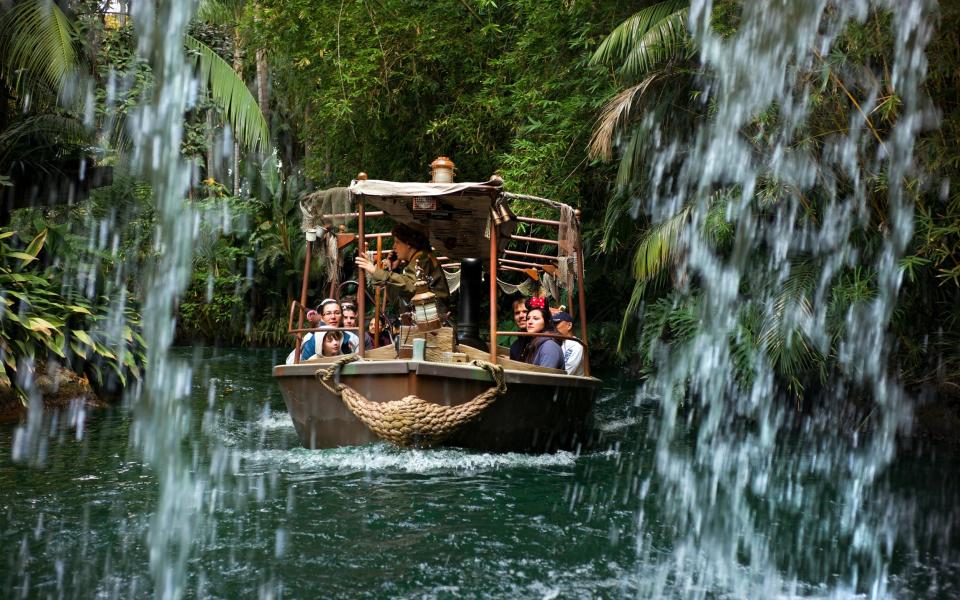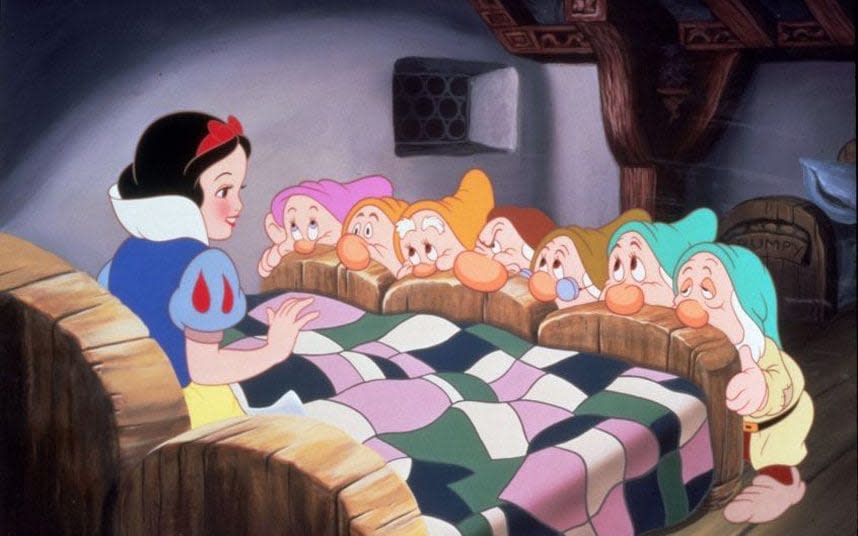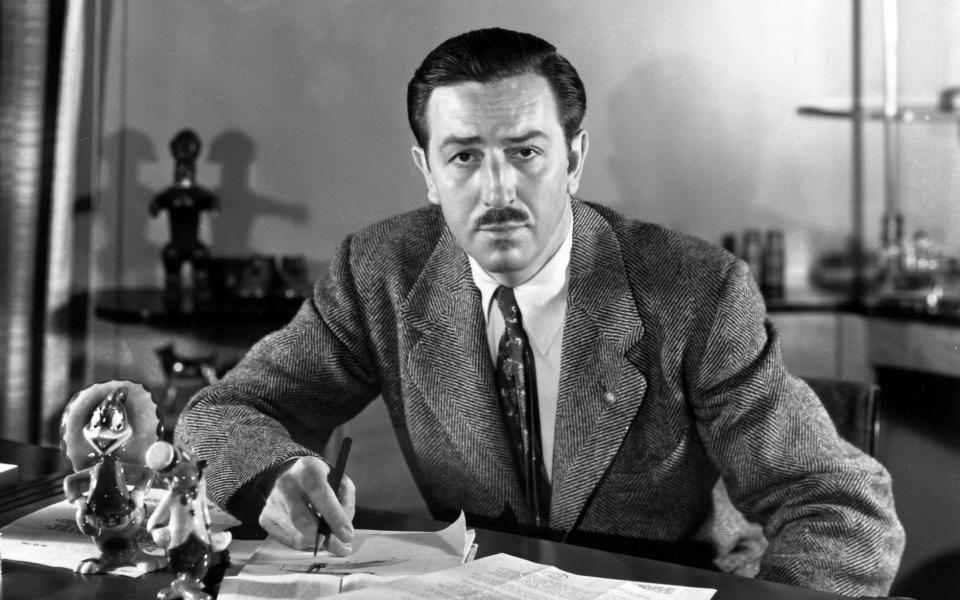Disney’s problematic princess: why Snow White is forever being cancelled

It’s a tale as old as Twitter. Disneyland’s new Snow White ride, which reopened this month after a year of Covid shutdown, faces criticism for its "non-consensual kiss" between Snow White and Prince Charming.
Snow White’s Enchanted Wish is a reimagining of Snow White’s Scary Adventures, one of the park’s inaugural rides when it opened in 1955. And it retains many elements of the original: visitors clunk along in minecarts in front of scenes from the film, recreated with jazzy LED projections, lazers and herky-jerky animatronics.
But this faithfulness to Walt Disney’s 1938 film is precisely the problem, according to theme park reviewers, Julie Tremaine and Katy Dowd. “The attraction preserves much of the charm of what was originally opened,” they wrote on SFGate. “[But] it also adds in the movie’s biggest problem.”
They continued: “Haven't we already agreed that consent in early Disney movies is a major issue? Why not re-imagine an ending in keeping with the spirit of the movie and Snow White's place in the Disney canon, but that avoids this problem?”
Why not indeed? Disneyland, after all, has proved a dab hand at hasty retrofits. As Tremaine and Dowd point out, another popular ride, Splash Mountain, has been overhauled because of its problematic Southern stereotypes. And The Jungle Cruise is still closed after Disney promised to remove the “Trader Sam” character, a jolly dealer in shrunken heads, and its ape-like depictions of indigenous people.
Remakes of Disney's early princess films have tacked perilously close to cancellation, too. In a piece for Vox, Emily VanDerWerff slammed Kenneth Branagh's 2015 adaptation of Cinderella with Lily James as the put-upon sibling. "Let's face it – there aren't a ton of ways to make the fairy tale Cinderella into a modernist feminist anthem," she wrote. "But even with those caveats, Disney's new remake is somehow more regressive than the studio's 1950 animated version."
The 2017 take on Beauty and the Beast, meanwhile, with Emma Watson as Belle, faced ire for it's much-ballyhooed "feminist reimagining" of the tale which wasn't, in fact, so progressive. "It smacks of tinny, 1990s inconsistency," wrote Zoe Williams in The Guardian. "[It] rebelliously reject[s] frilly conformity one minute, [and] wallows in it the next."
It’s not even the first time Snow White has been MeToo’d. In 2017, Professor Kazue Muta, a sociologist at Osaka University, wrote a widely-shared blog post in which she drew on a news story about a man kissing a sleeping woman on the subway – and laid into Disney’s Snow White for normalising “unconscious sexual activity”.
“Kissing a woman … without confirmation or consent can be read as sexual violence,” she said. “Rather than the romantic dream story that is widely believed. [It is] rape.”

Yet the story of Snow White is more tangled and troublesome than just one kiss. It begins a long time ago and far, far away – in 1786, to be precise, in the small town of Hanau where there lived two brothers, Jacob and Wilhelm Grimm. The Grimms grew up in a prosperous middle-class family but, with their father’s death in 1796, they were forced to throw themselves on a network of aristocrats for patronage and support.
Fortunately, the brothers had a reputation as stellar scholars at the University of Marburg. While they had initially enrolled to study law, they fell under the influence of an historian, Friedrich von Savigny, who was fascinated by the German language and its indigenous narratives. So alongside other enthusiasts such as Clemens Brentano and Johann Gottfried Herder, Savigny tasked the brothers with gathering hand-me-down stories from the nearby countryside.
At that time, Germany was not even a glimmer in Otto Von Bismark’s eye. (In fact, Bismarck himself was born the three years after the first volume of the Grimm’s stories was published.) Instead, it was a hodge-podge of principalities, bishoprics and bite-sized fiefdoms. However, a wave of nationalist enthusiasm was sweeping Europe and, with it, the notion that a national identity could be patched together from the off-cuts of stories rooted in the land – the lore of the common people: volk, the “folk”.
In Britain, Wordsworth and Coleridge released their 1798 Lyrical Ballads, revisionings of old traveller’s tunes. While back in Hesse-Cassel, the Brothers Grimm published the first results of their tale-truffling: the 1812 edition of Kinder- und Hausm?rchen, Children and Household Tales. It was very different, though, from the fairy tales we would recognise now – largely a scholarly exercise, it bristled with footnotes and fortifications of philology.

It was also a bit of con. Though the Grimms had a wide variety of informants, haunting coaching inns, wells, pilgrimage sites and other hubs for story-dealing, they also used written sources, including newspapers. In fact, one of the most notable stories, the Juniper Tree, was written down for them by the painter Philipp Otto Runge, a family friend. The Household Tales were literary stories dressed up as salt-of-the-earth oral yarns.
And they were far from family friendly. The Grimms' Tales were thick with incest, cannibalism, sexual violence, murder and necrophilia. In their Cinderella, for instance, the wicked sisters hack their toes off to fit into the pearly slippers. And, as with Disney’s film, Cinderella is aided by a helpful flock of pigeons – but in the Tales, these feathered friends avenge her mistreatment by pecking out the eyes of the sisters.
“The Grimms came under some fire because of the cannibalism, the infanticide, the general bloodthirstiness of the Tales,” says Professor Marina Warner, an expert in fairy tales. “[But], the symbolic language of stories like Snow White imprints on our minds – the red apple, the glass coffin, the poisoned comb.”

The brothers did not invent the Snow White story. Variations on the tale have been traced as far afield as Scandinavia and Turkey – and most are deeply problematic from a modern perspective. There are clear echoes of the story in legend of Chione, as told in Ovid’s Metamorphoses. In that version, Chione (“Snow” in Latin) is the most beautiful woman in the land. But her beauty makes her a target for the gods Hermes and Apollo. First, Hermes puts her to sleep with a touch of his caduceus and then rapes her. Next, Apollo approaches her disguised as a crone and, again, rapes her. In a Sicilian telling, meanwhile, Snow White is not the daughter of a king, but an innkeeper. And she escapes her wicked mother to live with a band of robbers. They, too, assault her. In fact, most variations hold one thing in common: enlightened sex education they ain't.
The Grimms’ take is predictably, well, grim. In their version, it is Snow White’s mother, not stepmother, who grows jealous of her daughter’s beauty. After Snow White flees, she orders a hunter to bring back her heart as a token. But the hunter cannot bring himself to kill Snow White so instead he brings the mother a boar’s heart – which she, believing it to be her daughter’s, greedily consumes. Snow White, too, is not the innocent intimate of nature she becomes in Disney’s film. Instead, she breaks into the dwarves’ cottage, steals their food and trashes their beds trying to squeeze herself into them.
Snow White’s mother then tries to murder her three times. First, she dresses as a pedlar-woman and entices Snow White to try on a brightly-coloured corset, which she yanks tight to suffocate her. When that fails, she attempts to poison her with a venomous comb. Before finally, as in the film, she succeeds in poisoning Snow White with a spiked apple.
But here the story branches from Disney’s version. While a prince does fall in love with Snow White, he doesn’t wake her with a kiss; instead, he packs her off, glass coffin and all, to his castle. There, because he cannot bear to part with his comatose love, he has his servants drag her around after him. Eventually, one trips, drops the coffin, and dislodges the chunk of poisoned apple, waking Snow White. (In some versions, the servant gets fed up and boots the coffin with the same result.) The end? Not quite: the queen must still be bumped off. So she is summarily dispatched when red-hot shoes are fastened to her feet and forced to dance until she dies.
Even contemporary audiences thought this was a bit strong. The Brothers Grimm revised the stories throughout their lives, issuing 17 subsequent versions of their Tales. Each edition abraded away more and more of their gritty specificity: place names were scrubbed, the sexual violence was dialed down and child-friendly illustrations repackaged them for younger readers.
This dilution continued as the Tales were translated. George Cruikshank, a notable illustrator, provided the frontispiece for the first British edition in 1823. It showed eager children crowded around a twinkly old man, delighting them with a story which mingled horror and wonder. This transition went hand-in-hand with the Victorian cult of childhood: the notion that children were not simply little adults, but individuals with distinct tastes, enchantments and desires.

“The Grimm tales became models of subsequent collections of fairy tales,” says Dr Juliette Wood, lecturer at Cardiff University and member of the Folklore Society. “They accommodated them to the values of the middle classes, especially the importance placed on the family.”
Disney’s film triumphantly cemented this cosy vision. It was a box office smash, and a critical darling. Walt and the dwarves fronted Time magazine and at the 1939 Academy Awards, Shirley Temple presented him with a special Oscar: one full-size statuette, and seven mini ones. Even Bertolt Brecht was a fan.
Yet the kiss isn’t the diciest element of the film. Disney’s animators, for instance, modelled the unsullied peachiness of Snow White after the hell-raising actor and former chorus girl, Joan Crawford. And the naming of the dwarves was outsourced to the entire company – among the titles in contention were Deafy, Dizzy, Hickey, Baldy, Wheezy and Shorty.
In this light, the kiss is a “red herring”, argues Wood. “Because these tales are so formalised, once you’ve established the pattern of the fairy tale, it’s easy to turn them upside down, and swap out elements. But you can always recognise the underlying story. Young audiences often deal with them better than adults can – because they know, however horrific things are, they will come right in the end.”

Warner agrees. “The whole history of fairy tale entertainment is one of remodelling. We can enjoy the representation of things like the Stepmother’s comeuppance, but that doesn’t mean we’re complicit in it. Otherwise we may as well give up on art.”
Or indeed on the notion that there is one canonical Snow White story which can be “fixed”. There are, after all, 32 other film adaptations alongside Disney’s. These include a raucous German comedy (7 Dwarves: Men Alone in a Wood), a languorous Catalan silent arthouse effort (Blancanieves), a rackety Terry Gilliam-directed gothic horror (Snow White: A Tale of Terror) and, naturally, a porno (Snow White and the Seven Perverts). And that’s not counting Hollywood’s more mainstream reworkings, such as Angelina Jolie’s Maleficent and the Huntsman series.
The Snow White story, then, endures because it is memorable – but also infinitely flexible. It bends to accommodate the concerns of each storyteller and their times. But, of course, this means that, a few decades down the line, it is likely to get caught out when those priorities change. That said, given Disney’s eagerness to tippex their past, I wouldn’t bet on a happily ever after for Prince Charming and his charmless kiss.